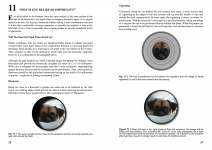pat mitchel
Well-known member
Hello; There a poster on cloudy nights forums/ binoculars that hs a problem selecting binos- he has optical blackouts with multiple binoculars *(typically with the eyecups extended full height) that apparently only happen in binos that have a wider AFOV than 60 degrees. Not having experienced anything remotely like that, my simple suggestion was that for whatever reason, he might need more eye relief. While that moderated the problem (at least in the case of the 8x42 vortex DB) it still remains. Anyone have an explanation as to what is happening that I might be able to relay to the poster with the problem. Thanks, Pat









